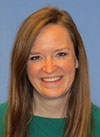
On April 22, 2019, the Wisconsin Supreme Court issued its final order regarding Rule Petition 19-01, making changes to Supreme Court Rules to address the ongoing shortage of stenographic court reporters. The court’s order reflects Wisconsin’s move toward a “blended system” of court reporting, in which monitored digital audio reporting (DAR) with a digital court reporter becomes a standard means of making the record in addition to traditional stenographic reporting.
The order comes in response to a rule petition filed by Judge Randy Koschnick, director of state courts, who appointed an advisory Making the Record Committee in 2017 to explore the ongoing shortage of stenographic court reporters in Wisconsin and nationwide. After months of research and input from judges, court reporters, and court staff across the state, the committee wrapped up its work in August 2018 with recommendations.1
In adopting the committee’s plan for implementation, Judge Koschnick filed the rule petition in January to establish monitored DAR as an accepted court reporting method and to clarify the ability of the chief judge and the district court administrator to assign court reporters to cover court proceedings.2
The Court Reporter Shortage
During the public hearing held on April 8, 2019, Judge Koschnick explained that the demand for court reporters cannot be met by recruiting for stenographic court reporters alone.3 As of Dec. 31, 2018, Wisconsin circuit courts employed 280 court reporters. Of these, 43 percent were 55 or older and could retire, and it is estimated that 63 percent could retire by Dec. 31, 2023. To keep pace with these retirements, the circuit courts would need to hire an average of 35 new court reporters each year.
 Katherine “Kat” Carpenter, U.W. 2013, is a legal advisor for the Wisconsin Supreme Court’s Office of Court Operations within the Director of State Courts Office. She conducts in-depth legal, policy, and program analyses and research for judges and circuit court staff. She previously was the field services director for the Office of the State Public Defender.
Katherine “Kat” Carpenter, U.W. 2013, is a legal advisor for the Wisconsin Supreme Court’s Office of Court Operations within the Director of State Courts Office. She conducts in-depth legal, policy, and program analyses and research for judges and circuit court staff. She previously was the field services director for the Office of the State Public Defender.
Unfortunately, enrollment at court reporter schools is dropping, both in Wisconsin and nationally, and there aren’t nearly enough recently graduated stenographic court reporters to meet the demand. Stenographic court reporting is a challenging course of study, requiring students to meet the stringent speed demands before graduation. The National Court Reporters Association reports that the number of graduates nationwide from its accredited schools dropped from 263 in 2015 to 168 in 2017.4
District court offices already spend a substantial amount of time trying to move court reporters from county to county to fill gaps in coverage and avoid canceling court.
“The growing shortage of court reporters is one of the most significant problems facing our court system today,” stated Patrick Brummond, district court administrator (DCA) of the Seventh Judicial Administrative District. “Vacancies are becoming more difficult to fill, and every day, district court administrators across the state are scrambling to provide coverage for court proceedings.” Brummond explained that judges and court reporters in some parts of the state are starting to feel the pinch of the shortage, facing difficult decisions to cancel hearings or court reporter leave.
“In the last few years, we have had to anticipate dozens of court cancellations due to lack of court reporter coverage,” commented Susan Byrnes, DCA of the Ninth Judicial Administrative District. “In 2016 and 2017 alone, we had to cancel court 38 times because we did not have a court reporter available to take the record. In extreme circumstances, we are finding that we are sending court reporters to courts over an hour away in order to take a record for a 15-minute hearing.”
The Move to Blended Systems of Court Reporting
Across the United States, court systems have turned to DAR and digital court reporters to fill in when stenographic court reporters are not available, and “blended systems” have become the norm. According to a 2017 survey conducted by the National Center for State Courts, the majority of states use a combination of DAR and stenography to produce verbatim records of court proceedings.5
The Wisconsin Supreme Court’s order adopts this blended model by including “monitored” DAR as a standard way of taking the record. The word “monitored” is intentional in the rule, as digital court reporters are responsible for monitoring the DAR equipment during court proceedings. Like stenographic court reporters, digital court reporters are personal appointees of their judges and are expected to adhere to quality standards maintained by all court reporters.
Wisconsin’s Use of DAR and Digital Court Reporters
Ten Wisconsin courts have regularly relied on DAR technology during the past decade. In those counties, skilled digital court reporters have been taking the record using digital audio technology during a variety of proceedings, including jury trials.
Grant County Circuit Court Judge Craig Day, who served on the Making the Record Committee, has relied almost exclusively on monitored digital court reporting to take the record since becoming a judge. “Digital audio reporting is an efficient and effective way of making the record. Over the past nine years, I have had approximately 150 jury trials and all but a few of those trials have been reported using my digital court reporter and system. Many of those cases have been appealed, and we have not run into any problems preparing the transcripts on appeal.”
Judges and court reporters in some parts of the state are starting to feel the pinch of the shortage, facing difficult decisions to cancel hearings or cancel court reporter leave.
The DAR systems installed by the Consolidated Court Automation Programs (CCAP) use multiple high-quality microphones located throughout the courtroom, recording on four channels for good voice separation. Digital audio recordings are automatically logged, saved, and backed up onto CCAP servers. “Users have indicated that the sound quality and reliability of the recordings are excellent,” stated Jean Bousquet, chief information officer at CCAP.
While a DAR system is running, the digital court reporter is responsible for confidence monitoring, which consists of listening to the audio as well as noting when cases are called and who is speaking at different times throughout the proceeding. Nichole Wiest, Grant County digital court reporter, explained that confidence monitoring is the key to making a successful record: “I regularly check the volumes and levels of the equipment throughout the hearing so that I can guarantee that individuals’ voices are coming in clearly and accurately for a good record.”
Digital court reporters also play a vital role in reminding lawyers when to mute and unmute their microphones, to ensure that attorney-client exchanges outside the court proceedings are not picked up by the audio recording equipment. If the audio recording happens to pick up those conversations, the new Supreme Court Rules make it clear that off-the-record conversations that are inadvertently recorded are not part of the verbatim record.
The Path Forward
The Wisconsin Supreme Court’s order is just one step to address the ongoing court reporter shortage in Wisconsin. The court system is diligently working on a wide range of activities to transition to this blended system, including making updates to personnel policies, recruitment, training, and outreach. While most counties now have equipment installed to help fill gaps in court reporter coverage, the plan is to install a DAR system in every county by the end of 2019.
For Judge Koschnick, moving to a blended system in Wisconsin balances the growing court reporter crisis while respecting the profession of stenographic court reporting. “I value the work that our stenographic court reporters are doing across the state,” Judge Koschnick stated. “The move to a blended system allows the court system to plan for future workforce and technology needs in the face of changing conditions.”
Meet Our Contributors
What’s the best career advice you ever received?
 A good friend once told me that the most important thing you can look for in a job is a work environment that fits your work ethic and habits. I have taken that to heart throughout my career, seeking out work environments that foster idea sharing and collaboration and that challenge me to think beyond the solutions that are right in front of me.
A good friend once told me that the most important thing you can look for in a job is a work environment that fits your work ethic and habits. I have taken that to heart throughout my career, seeking out work environments that foster idea sharing and collaboration and that challenge me to think beyond the solutions that are right in front of me.
A good work environment is not only integral to your productivity as an employee but also to your overall health and well-being as a person. I am grateful for the opportunities I have had to work in places that encourage me to be authentic and creative.
Katherine Carpenter, Wisconsin Supreme Court Office of Court Operations, Madison.
Become a contributor! Are you working on an interesting case? Have a practice tip to share? There are several ways to contribute to Wisconsin Lawyer. To discuss a topic idea, contact Managing Editor Karlé Lester at (800) 444-9404, ext. 6127, or email klester@wisbar.org. Check out our writing and submission guidelines.
Endnotes
1 Report of the Making the Record Committee, Director of State Courts Office (Aug. 3, 2018).
2 Rule Petition 19-01, Director of State Courts (Jan. 25, 2019).
3 Id.
4 Nat’l Court Reporters Ass’n, CRA Annual School Report FY 2016 and FY 2017.
5 Nat’l Ctr. for State Courts, State Organizational Survey: Making the Record – General Jurisdiction Courts (2017).
